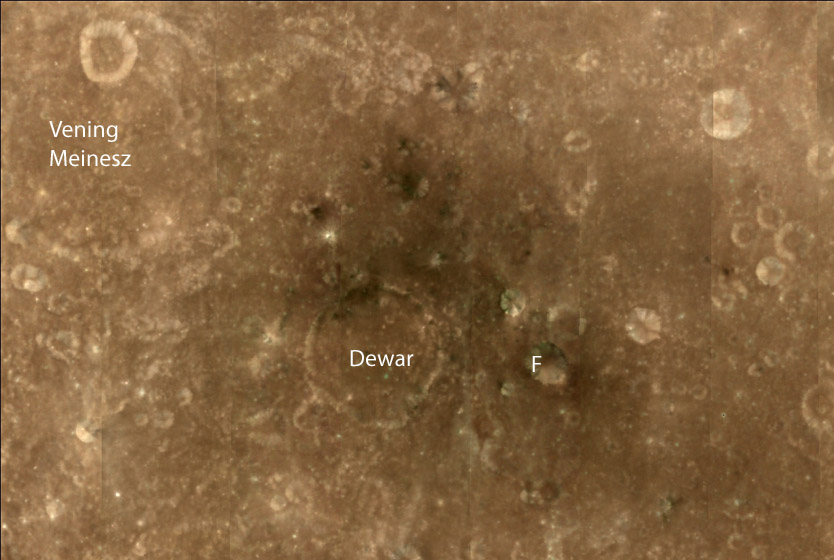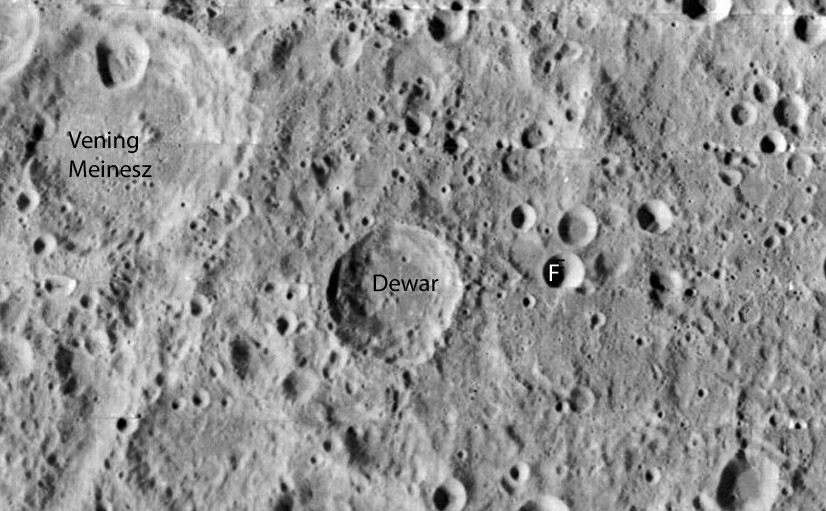Difference between revisions of "May 20, 2009"
| (2 intermediate revisions by the same user not shown) | |||
| Line 7: | Line 7: | ||
<em>Clementine image (above) and Lunar Orbiter 2-034M</em> <br /> | <em>Clementine image (above) and Lunar Orbiter 2-034M</em> <br /> | ||
<br /> | <br /> | ||
| − | Lunar volcanism, mostly mare lavas and some pyroclastics, occurs largely within and near impact basins. There are [ | + | Lunar volcanism, mostly mare lavas and some pyroclastics, occurs largely within and near impact basins. There are [[March_12,_2006|leaks]] of volcanic material. Here is another one, centered at 166°E and 1.8°S. This cluster of dark material is scattered around small craters just north and east of 50 km wide Dewar. These look like normal impact craters, so presumably the dark material is buried basaltic lavas (or igneous intrusions - magma that hasn't erupted) that have been excavated by the impacts. The question is why are these volcanic rocks near enough the surface to be brought up by small crater impacts, but have not erupted on their own?<br /> |
<br /> | <br /> | ||
<em>[mailto:tychocrater@yahoo.com Chuck Wood]</em><br /> | <em>[mailto:tychocrater@yahoo.com Chuck Wood]</em><br /> | ||
<br /> | <br /> | ||
<strong>Related Links</strong><br /> | <strong>Related Links</strong><br /> | ||
| − | [ | + | [https://the-moon.us/wiki/Clementine_Atlas Bussey & Spudis] plate 85<br /> |
<br /> | <br /> | ||
<p><b>Yesterday's LPOD:</b> [[May 19, 2009|Southern Sentinels]] </p> | <p><b>Yesterday's LPOD:</b> [[May 19, 2009|Southern Sentinels]] </p> | ||
Latest revision as of 17:53, 13 October 2018
Another Leak


Clementine image (above) and Lunar Orbiter 2-034M
Lunar volcanism, mostly mare lavas and some pyroclastics, occurs largely within and near impact basins. There are leaks of volcanic material. Here is another one, centered at 166°E and 1.8°S. This cluster of dark material is scattered around small craters just north and east of 50 km wide Dewar. These look like normal impact craters, so presumably the dark material is buried basaltic lavas (or igneous intrusions - magma that hasn't erupted) that have been excavated by the impacts. The question is why are these volcanic rocks near enough the surface to be brought up by small crater impacts, but have not erupted on their own?
Chuck Wood
Related Links
Bussey & Spudis plate 85
Yesterday's LPOD: Southern Sentinels
Tomorrow's LPOD: Almost There
COMMENTS?
Register, Log in, and join in the comments.



